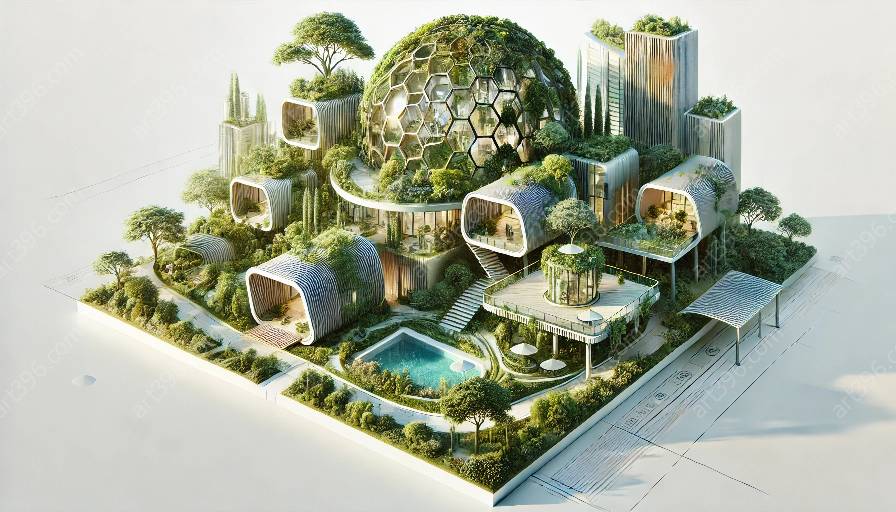Sustainable architecture, also known as green architecture, seeks to minimize the negative environmental impact of buildings by efficiency and moderation in the use of materials, energy, and development space. It emphasizes the creation of energy-efficient, eco-friendly, and healthful buildings. As sustainable architecture gains prominence, its implications for building codes and regulations become increasingly significant.
Impact on Energy Efficiency Standards
One of the key implications of sustainable architecture for building codes and regulations is the influence on energy efficiency standards. As sustainable architecture prioritizes energy conservation and reduced carbon footprint, building codes and regulations are updated to enforce stricter energy efficiency requirements. This includes mandating the use of sustainable building materials, promoting renewable energy sources, and implementing designs that maximize natural lighting and ventilation.
Integration of Sustainable Practices
Sustainable architecture also necessitates the integration of environmentally friendly practices into building codes and regulations. This entails incorporating guidelines for sustainable site planning, water conservation, and waste management into the regulatory framework. Building codes are updated to promote the use of recycled materials, water-saving fixtures, and efficient waste disposal systems, aligning with the principles of sustainable architecture.
Consideration of Life Cycle Assessment
Building codes and regulations are impacted by sustainable architecture through the consideration of life cycle assessment. Sustainable architecture emphasizes the evaluation of a building's environmental impact throughout its entire life cycle, from construction and operation to demolition or reuse. This holistic approach influences building regulations by requiring assessments of environmental performance and resource efficiency, leading to the development of guidelines that prioritize long-term sustainability.
Emphasis on Green Building Certifications
The rise of sustainable architecture has led to an increased emphasis on green building certifications within building codes and regulations. Building certification programs, such as LEED (Leadership in Energy and Environmental Design) and BREEAM (Building Research Establishment Environmental Assessment Method), are integrated into regulatory frameworks to incentivize and validate sustainable building practices. Compliance with these certifications may become a mandatory requirement, further shaping building codes in favor of sustainable architecture.
Incorporation of Climate Resilience Measures
Another implication of sustainable architecture for building codes and regulations is the incorporation of climate resilience measures. With the growing awareness of climate change and its impact on the built environment, building regulations are adapting to address resilience against extreme weather events, rising temperatures, and changing climate patterns. Sustainable architecture promotes the integration of resilient design strategies into building codes, such as enhanced structural durability, water management, and adaptive building technologies.
Collaboration with Environmental Agencies
The implications of sustainable architecture extend to fostering collaboration between regulatory bodies and environmental agencies. Building codes and regulations are shaped by the expertise and guidance of environmental organizations, leading to the development of standards that align with sustainable architecture principles. This collaborative approach ensures that regulations address ecological considerations, biodiversity preservation, and habitat protection within the built environment.
Challenges and Opportunities for Implementation
While the implications of sustainable architecture on building codes and regulations bring about positive environmental impacts, they also present challenges and opportunities for implementation. Stakeholders, including architects, developers, and government agencies, must navigate the complexities of integrating sustainable practices into regulatory frameworks while addressing cost considerations and technical feasibility. This dynamic landscape offers opportunities to drive innovation, foster interdisciplinary collaboration, and enhance the overall quality of the built environment.
Conclusion
In conclusion, sustainable architecture significantly influences building codes and regulations by prioritizing energy efficiency, promoting sustainable practices, considering life cycle assessment, emphasizing green building certifications, integrating climate resilience measures, and fostering collaboration with environmental agencies. The implications of sustainable architecture are reshaping the regulatory landscape to align with environmentally conscious design and construction practices, ultimately contributing to a more sustainable and resilient built environment.





























































